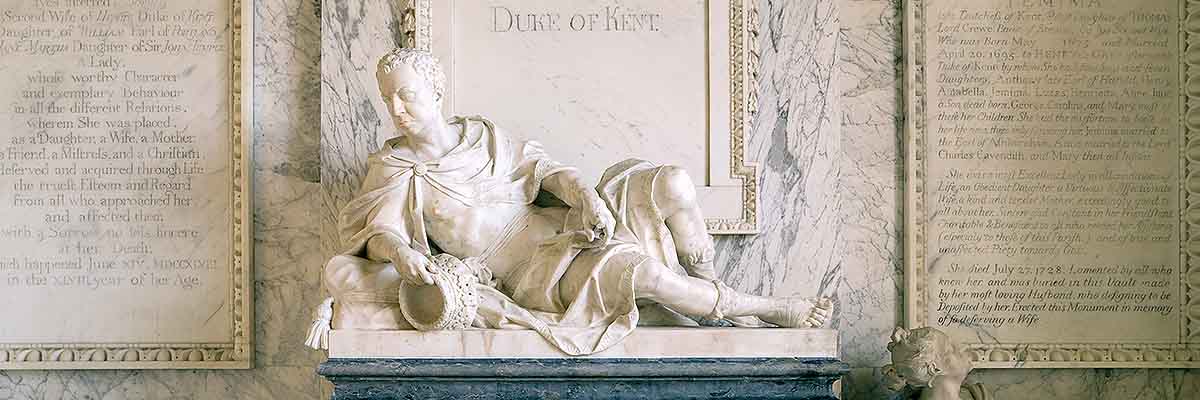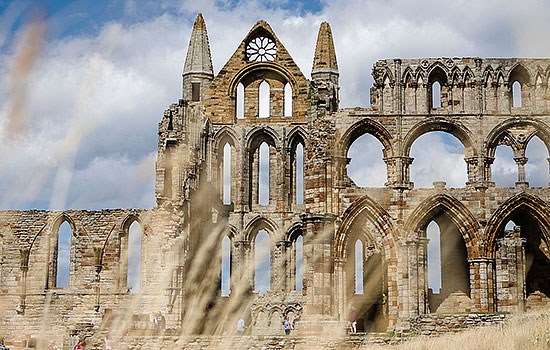History of De Grey Mausoleum
The De Grey Mausoleum is attached to the mid-15th-century parish church of St John at Flitton, Bedfordshire. It was first built in the early 17th century, before being expanded in 1704.The mausoleum contains a remarkable collection of funerary monuments spanning three centuries.

Origins of the Mausoleum
The structure was originally a chapel added to the church of St John the Baptist at Flitton by Henry Grey, 6th Earl of Kent (d.1614), in about 1605. According to his will, he intended this ‘little Chappell or buryall place’ to be a burial place for his family and descendants. The church itself had been built by the de Grey family of nearby Wrest Park in the mid-15th century.
Expansion
The original chapel consisted of a single chamber abutting the north wall of the chancel and the west wall of the north aisle. This was much altered when the mausoleum was expanded between 1705 and 1710 by Henry Grey, 1st Duke of Kent (d.1740), a courtier and politician under Queen Anne (r.1702–14).
The larger, cruciform-shaped room he created represented a celebration of the growing status of the Grey family and its glorious future.
19th-century Alterations
It is likely that the southern limb of the mausoleum was substantially altered in the 19th century to accommodate Thomas, 2nd Earl de Grey (d. 1859), his wife, and five of their children. It was Thomas, a keen architect, who in the 1830s demolished the old house at Wrest Park and built a new mansion in the French revival style.
On his death his eldest daughter, Anne, Countess Cowper, inherited Wrest Park. She used her husband’s house in Hertfordshire as her main residence, and the mausoleum passed out of use.
Further Reading
Neale, J, ‘Very privately buried: monuments in the De Grey Mausoleum’, English Heritage Collections Review, 4 (2003), 75–80
Penny, N, Church Monuments in Romantic England (New Haven and London, 1977)
Hann, A and Garland, S, Wrest Park (English Heritage guidebook, London, 2011)


